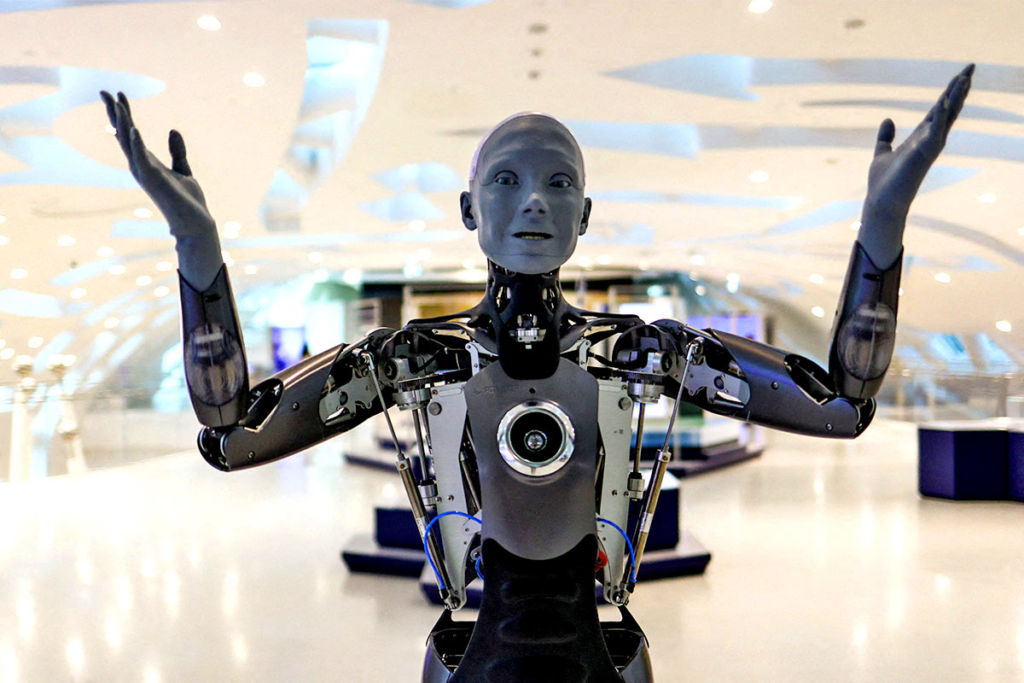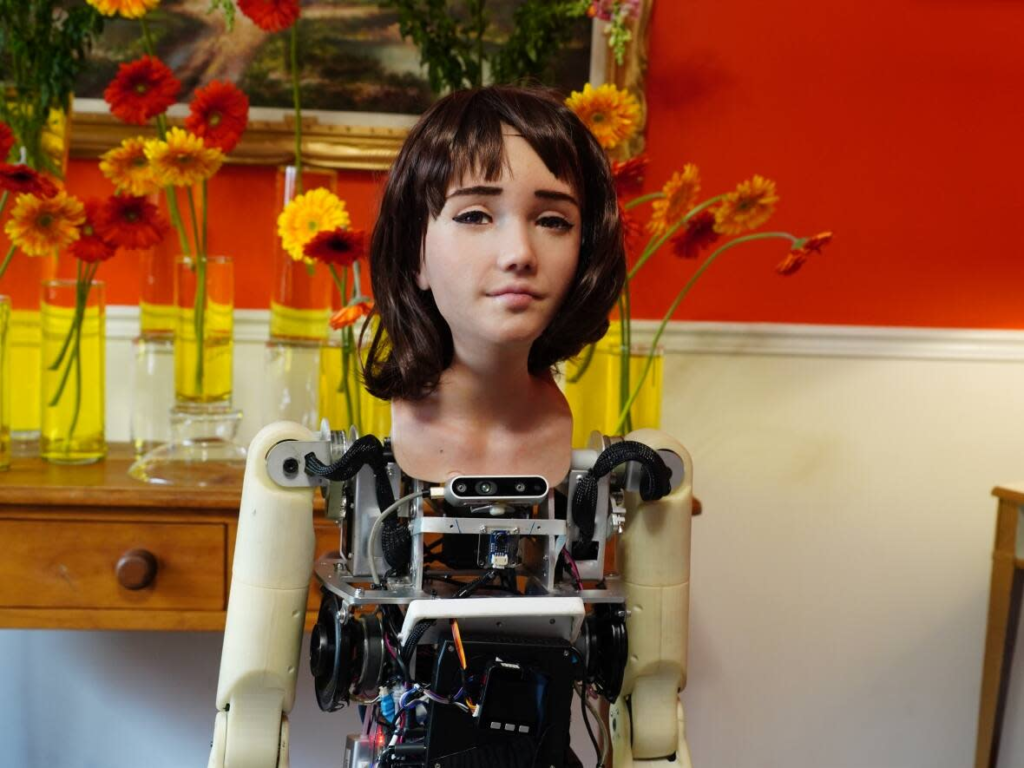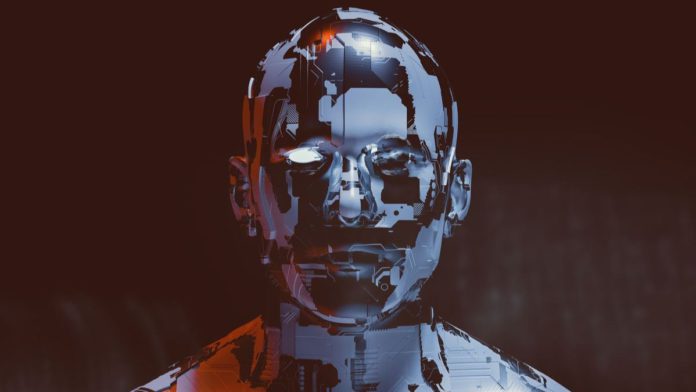The fascination with humanoid robots is understandable, and several companies are already developing cutting-edge humanoid robots that promise to bring us widespread use of intelligent machines in various applications and contexts. According to a new Goldman Sachs estimate, the market for humanoid robots, like the newly debuted Tesla Bot, might reach US$150 billion annually over the next 15 years. This bold prediction may be corroborated by the rise of humanoid robots in the news, but are we humans prepared to embrace such robots as a part of our everyday lives? Haven’t movies like the Terminator series, Avengers Age of Ultron, and X-Men: Days of Future Past warned us otherwise?
Goldman Sachs has been following the Tesla-led resurrection of humanoid robots, and therefore recently, the company published a fresh analysis on a potential early market investment case. According to the report, the market for humanoid robots might be worth US$154 billion by 2035, which is what Tesla CEO Elon Musk himself predicted.
Goldman Sachs asserted that the introduction of Tesla’s humanoid robot prototype, “Optimus,” has rekindled discourse about the market potential presented by such innovation. The company believes that in 10–15 years, a market size of at least US$6 billion would be feasible, allowing humanoid robots to meet 4% of the US manufacturing labor shortage gap by 2030 and 2% of the world’s need for elderly care by 2035.
The company further explained its “blue-sky scenario”: Goldman Sachs anticipates a market of up to US$152 billion by 2035 in a “blue-sky” scenario, which is close to the global market for electric vehicles and one-third of the market for smartphones as of 2021. This suggests labor shortage problems, such as those for manufacturing and elderly care, can be addressed to a large extent.

It’s interesting to note that Goldman Sachs acknowledges Tesla as being the driving force behind the ‘renaissance’ of humanoid robots, yet the firm advises purchasing motion component suppliers to profit from this new market.
2022 has been a remarkable year for humanoid robots. Many people think that robots are often seen negatively in Hollywood as incarnations of evil sentinels. While the assassin robot is a common representation in Western popular culture, then many people in other regions of the world also view robots as saviors or caretakers or assets.

Last month, the Museum of Future in Dubai unveiled a humanoid robot named Ameca as a new addition to the staff. Ameca can welcome people, give directions, and speak numerous languages. The museum’s official Instagram account posted a video of Ameca and a MOTF employee identified Aya introducing themselves. The video of her being included in the MOTF went viral right away. While many viewers were astounded by the video, others were concerned for the future of humanity. Ameca was created by Engineered Arts, however, at the moment, her bottom half isn’t working, thus she can’t move. The creators of the robot claim they are developing a version that will make it more like humans.

In the same month, researchers at the Jewish General Hospital in Montreal started a pilot research to determine if Grace, a humanoid robot, can assist seniors in overcoming loneliness. The GeriPARTy Laboratory team created Grace to listen when people talk and then generate a response. She can also perform reading exercises, tell jokes, and discuss subjects that older adults would find interesting. As part of research directed by Montreal’s Jewish General Hospital, Résidence Pearl & Theo will get visits from this humanoid robot twice weekly for a period of eight weeks. During each 30-minute session, her mission will be to keep elders in nursing facilities company and to help overcome social isolation. According to the residents, unlike human companions, Grace can work the whole day without getting tired or bored, nor has to cope with the mental strain of handling strong emotions like humans.
Residents of the Gulmohar Garden Society in Jaipur, India, saw the participation of the Sona 3.5 AI Humanoid Robot and Sona 2.5 Service Robot Men in the Diwali celebrations. These robots, created by Club First Robotics in Jaipur, can successfully perform various tasks. For instance, Sona 2.5 oversaw the cafeteria’s food service while Sona 3.5 filed grievances, provided comments, and answered questions about society. During the festivities, Xena 5.0 handled all security responsibilities, turned on the fire suppression system, irrigated the garden, and kept an eye on everything on camera.

October also saw Ai-Da, the world’s first ultra-realistic AI robot artist, being questioned by a committee in the UK Parliament. The British Parliament saw a robot appear before the UK’s Upper House, the House of Lords, for the first time in history. The Ai-Da testified before the UK’s Communications and Digital Committee as part of the inquiry into the future of the creative industries. The humanoid robot, clad in an orange shirt and denim dungarees, addressed questions on the possible challenges to creativity posed by artificial intelligence and technology. The humanoid robot, developed by Aidan Meller of the University of Oxford, continued to speak openly about its ability to create and improve creative disciplines, including poetry and painting.
Read More: Boston Dynamics Pledges not to Arm Robots with Weapons
All these inventions have highlighted the caring and resourceful side of humanoid robots. However, many are not still on board with the idea. The quest to develop universal humanoid robotic solutions is too complicated and rarely provides the best answer to any given real-world issue. In contrast to the aforementioned example, it is less clear in what direction and precisely for what real-world applications humanoid robots will be deployed, particularly the Tesla robot Optimus, which is now stealing the limelight. Critics have never hesitated to call Optimus a demo robot whose ulterior goal might boost Tesla’s stocks. The Goldman Sachs report might highlight a possible economic benefit from the humanoid robot hype, however, there are questions about the time the technology will take to reach commercialization, ethical issues, and more that need to be answered.
Sure, we do have instances of movies that have portrayed robots as our aides, like C3PO from Star Wars, Wall-E from Wall-E, or Baymax from Big Hero 6, but reality may not align with them. While humanoid robots like Grace make up for good PR, we cannot ignore the possibility of the uncanny valley effect. The uncanny valley has always been one of the most significant psychological phenomena and challenges in the realm of robotics. As we inch closer to making robots that are aesthetically and functionally xerox of humans, we risk the uncanny valley effect of being uncomfortable around these robots. The future, which promises a new age of humanoid robots, also threatens to push us to a new forced reality of being comfortable with these humanmade bipedal bots – resulting in humans feeling anxious, paranoid, and uneasy around them. As we perfect humanoid robots to make them more efficient, we also need to account for the usability and uncanny valley effect before signing up for mass adoption.


